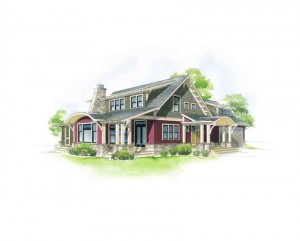Learn the Language of Your Home: House Designs 

By Jay Libby, Andersen Windows
People always say when ya know, ya know.
When you know you’ve found the house meant to be your home, chances are your explanation for loving it might start with something like, “I just know.”
The connection you feel to that house trumps any formal training – you and your new house are speaking the language of love. Until you need to make some home improvements or repairs, that is.
For many homeowners, the remodeling stage of home ownership crosses the boarder into foreign territory. You feel like you’re in another country, trying to understand the language of your home’s architectural style. Frustration and a little intimidation are common. You may ask yourself, “what have I gotten myself into?” And we’ve all driven past, visited or even lived in homes where remodeling turned in to “remuddling”; an update with the best intentions that simply missed its mark or wasn’t even close.
So, how do you take that fixer-upper back to its former glory; the botched remodel to that haven of successful home improvement you envision; the blank slate of a new home project to dream home status?
Look to Historical House Designs:
Look to house designs of the past and it will guide your future. Start with style; decide what style suits you best, then plan accordingly. Doing this before you begin gives you a readily available framework to be sure your decisions fit the style you hope to achieve.
An example of this direction is something we’ve been involved in at Andersen Windows. We knew it was important to help homeowners connect in a more efficient way with their builders and architects – to give them a language of style that they may have previously eluded them.
Following years of research with architects throughout the country, we created a”house designs” online style library that can be found at (as well as printed pattern books and iPad apps).
Popular House Styles:
The most popular house designs in America that we focus on include American Farmhouse, Craftsman Bungalow, Georgian/Federal and Prairie. New styles are being added regularly and will soon include French Eclectic, Modern, Queen Anne, Ranch, Spanish Colonial and Tudor.
Each offering contains illustrations and descriptions of the architectural elements that make up a style, including window proportions, groupings, positioning and accent windows. In addition, color palettes, combinations and grille patterns; interior and exterior trim details; and entry door, hardware and art glass options are included.
Like any relationship, the better you understand one another the deeper your bond. Once you speak your home’s language chances are you’ll get along fine.
Article By Jay Libby, Andersen Windows
